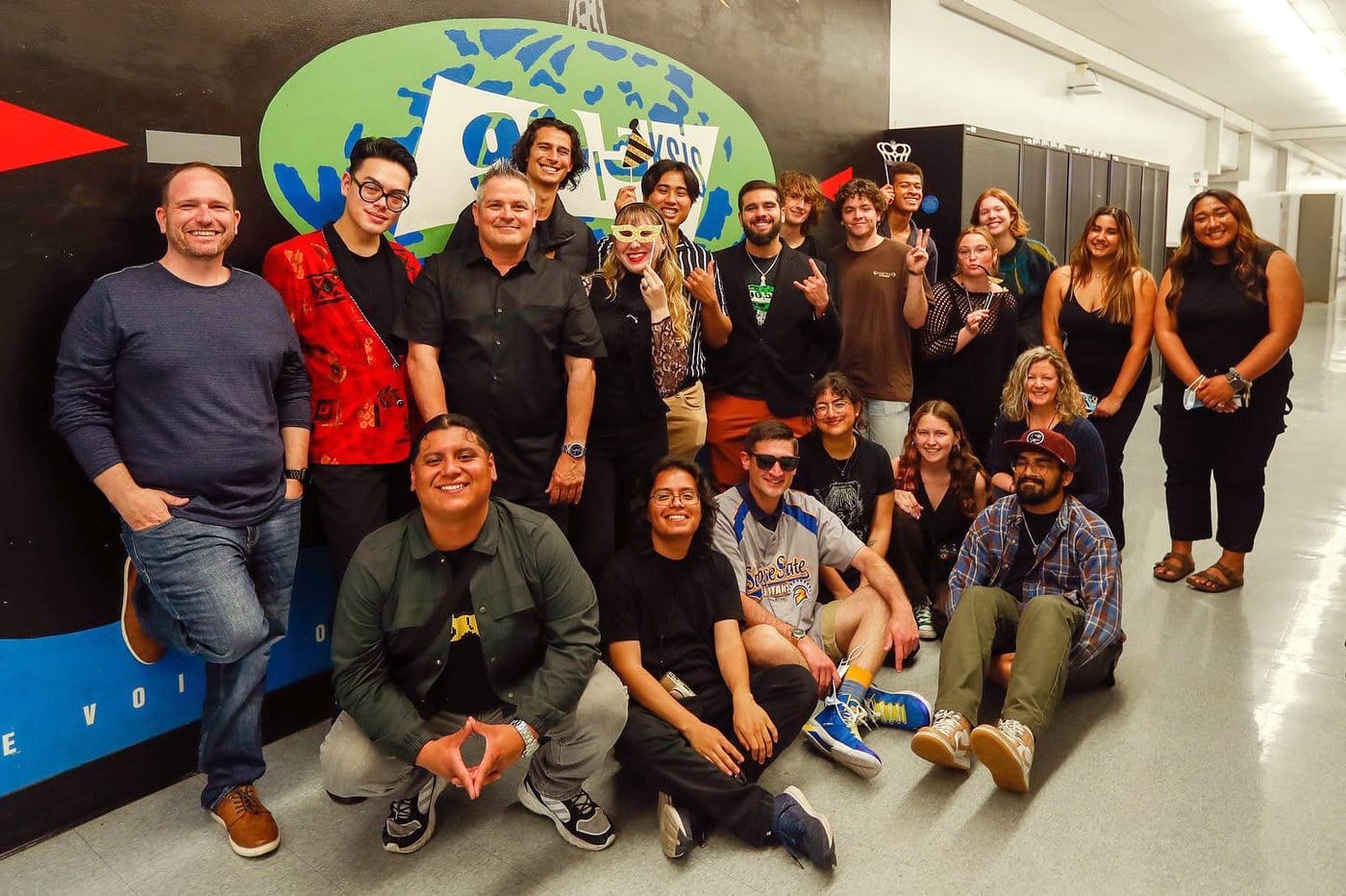
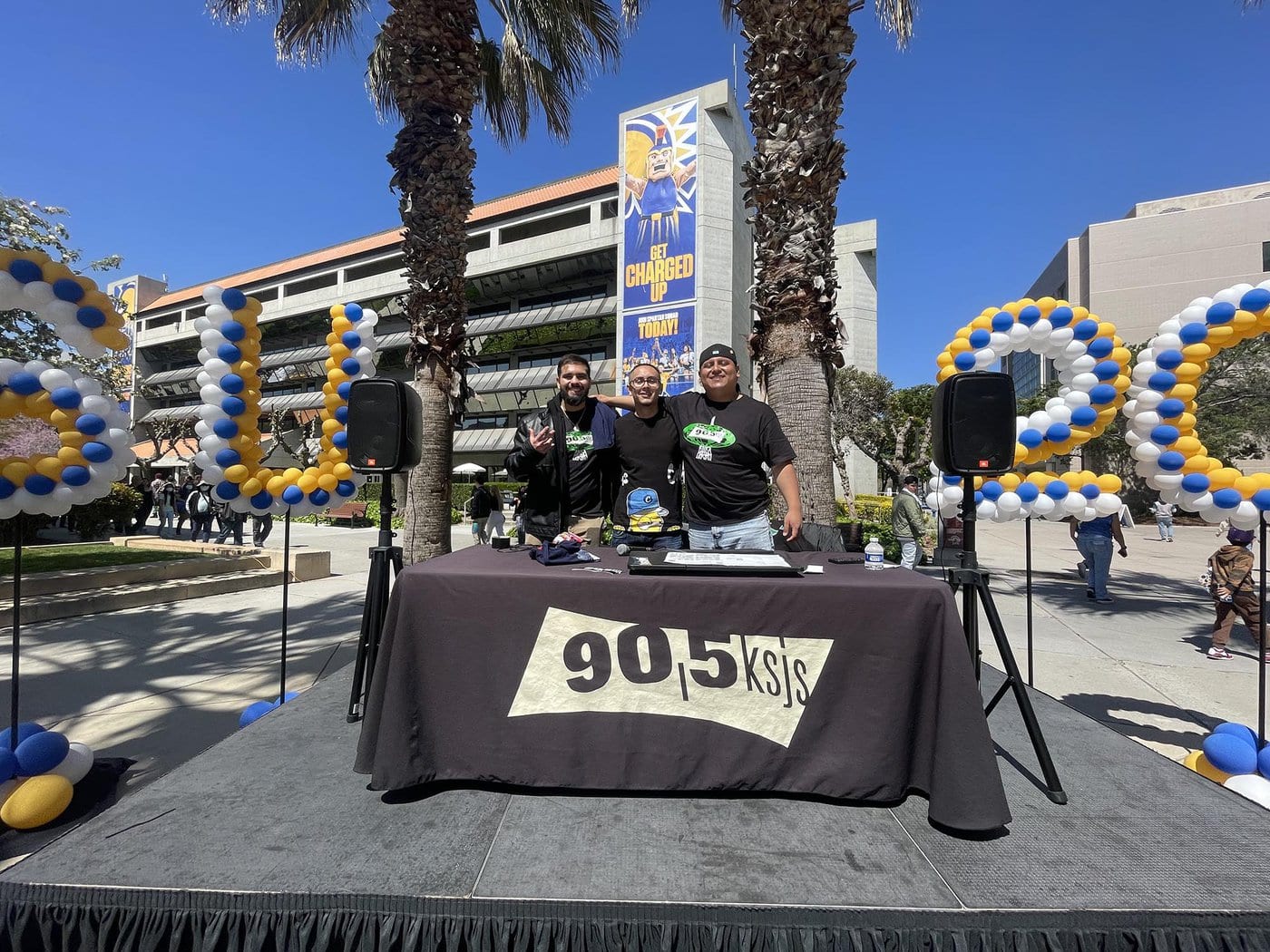
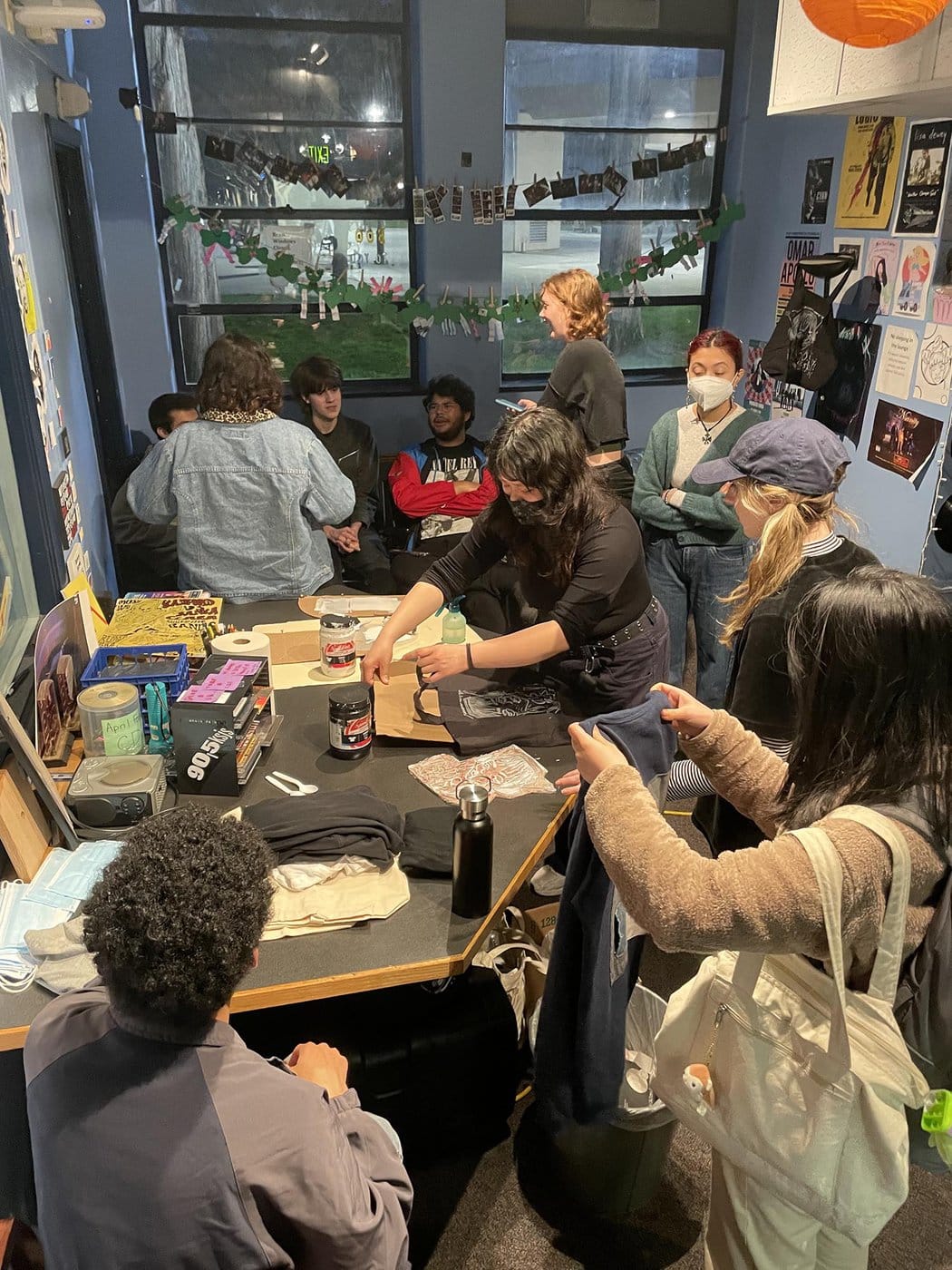
KSJS is a non-commercial radio station broadcasting 24 hours a day, 365 days a year on 90.5 FM and the Internet.
Our programming includes a wide range of eclectic info and music. KSJS provides the best alternative to commercial radio programming by offering a diverse selection of under represented music and unique public affairs.
The KSJS broadcast signal covers 7 San Francisco Bay Area counties: Alameda, San Francisco, Marin, Sonoma, Contra Costa, San Mateo, and Santa Clara. This lets listeners tune in to 90.5FM from San Jose to Gilroy, Fremont to Berkeley and from Palo Alto to Oakland.
As a public university radio station, KSJS looks to surrounding businesses and people in the community for support. By taking advantage of the KSJS underwriting program, community businesses profit while providing a valuable public service.
We transmit at 1500 watts, effective radiated power from high atop Coyote Peak in San Jose, California from our studios at SJSU.

Mission Statement
As operators of a non-commercial educational FM broadcasting station, KSJS, we promise to provide an opportunity for all San Jose State students and selected volunteers from all major areas to participate in the hands-on experience of operating an FM broadcast radio station. Some areas include Public Relations, Art, Design, Marketing, and Multimedia Web Design. KSJS is a learning institute, willing to train and teach the participants the effective tools of communication, team cooperation, and management. As a learning institution, KSJS understands that mistakes may occur and will acknowledge these moments as a learning tool for improvement. In addition KSJS fulfills its federal mandate to meet the public’s interest of the community. These communities include, San Jose State University, the city of San Jose, the greater Santa Clara County, and beyond.
Our Story
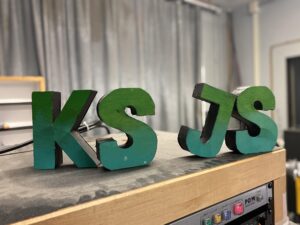
In the proposal dated January 1962, it was suggested that for about $11,000, a transmitter and studios could be purchased and installed. Funds would come from both the instructional budget and Associated Students. It would be staffed and programmed by the faculty and students of the Speech, Drama and Journalism Departments and, while expected to provide an educational experience for students, it would clearly be under the control of the newly created FM Station Policy Committee. Programming goals as stated in the original proposal to the FCC were those designed to “reflect the quality and objectives of the college.” Indeed, several pages of programming policies were presented as part of the original application, all suggesting plenty of checks and balances on programming content. It should be noted here that all applicants for a federal broadcast license were expected to say these sorts of things.
On February 11, 1963, KSJS-FM went on the air. With a modest power of 85 watts, it was possible to hear the new station several miles from the College. Possible, of course if you had that rare FM radio. In fact, during these early years, it was even recommended that small AM transmitters be installed in the dormitories to rebroadcast KSJS-FM so that more students could receive the station. Programming in those early days was limited to the hours of 4:30pm to 8:30pm, Monday through Friday and only during the semester. It was a humble beginning with much of the programming on tape from the National Educational Network. KSJS students produced and presented news, sports, classical music and a variety of talk and interview programs.
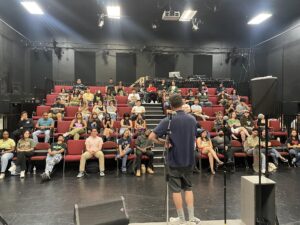
The passage of the Public Radio Act in 1967 caused many educational stations to pause and reflect on their future and by the early 1970’s, there was plenty of discussion here surrounding possible affiliation with National Public Radio, NPR. With dissatisfaction over the operation of the station growing in proportion to the social and political events of the time, the College FM Policy Committee in 1973 recommended that KSJS apply for a power increase in order to qualify for NPR affiliation. In that same study “KSJS/FM, a Time for Decision,” it was suggested that KSJS might be taken out of the hands of students and run by administrators. Fortunately, cooler heads prevailed. KSJS-FM was able to increase power to 1000 watts by 1975 and remain as a student station in the Drama Department.
After almost 50 years of KSJS, we have reinvented the wheel at least a dozen times. We have also managed to withstand the plethora of well-meaning but largely ineffective committees and sub-committees, all with their own agenda for KSJS-FM. We are left today with a student-run, student-staffed, student-funded station, but with the programming expectations of a public radio station. It is an awesome responsibility for which we have been rewarded and recognized: In 1989 and in 1991, we were named “Station of the Year” by the National Association of College Broadcasters.
